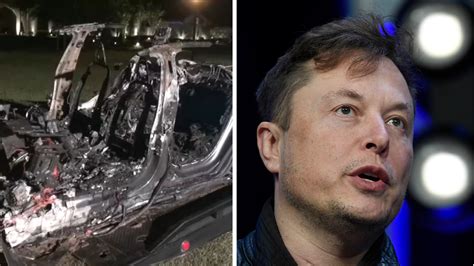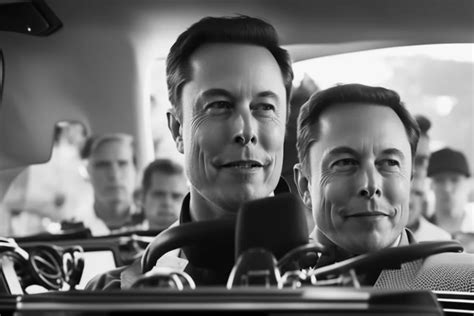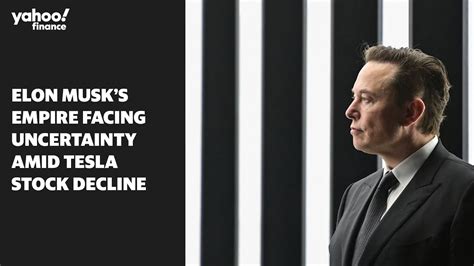
Tesla CEO Elon Musk faces renewed criticism over claims regarding the company’s Autopilot and Full Self-Driving (FSD) capabilities, with critics alleging misleading marketing practices that endanger drivers. The latest wave of scrutiny includes accusations of downplaying safety concerns and overstating the current functionality of the driver-assistance systems.
Elon Musk is once again under fire for what critics call misleading marketing of Tesla’s Autopilot and Full Self-Driving (FSD) features, raising serious safety concerns. Recent commentary highlights the discrepancy between Musk’s promises and the actual capabilities of the technology, fueling outrage among safety advocates and Tesla owners alike.
The core of the controversy lies in the perceived gap between Tesla’s marketing rhetoric and the reality of Autopilot and FSD’s operational abilities. While marketed as advanced driver-assistance systems, critics argue that these technologies are far from fully autonomous and require constant driver attention. This discrepancy, they claim, leads to driver complacency and increases the risk of accidents. “I don’t want to be ass,” one Tesla owner expressed, reflecting a sentiment of unease and frustration with the system’s performance, according to a report.
Musk’s persistent claims about the imminent arrival of full self-driving capabilities have also drawn criticism. Despite numerous timelines and promises, Tesla has yet to deliver a truly autonomous vehicle. This has led to accusations of misleading investors and customers, potentially inflating the company’s valuation and jeopardizing public safety.
The National Highway Traffic Safety Administration (NHTSA) is currently investigating Tesla’s Autopilot system following a series of accidents involving the technology. The investigation is examining whether Autopilot is functioning as intended and whether Tesla has taken adequate steps to prevent misuse of the system. The outcome of this investigation could have significant implications for Tesla and the future of autonomous driving technology.
Beyond regulatory scrutiny, Tesla faces a growing number of lawsuits related to Autopilot and FSD. Plaintiffs allege that the systems malfunctioned, leading to accidents and injuries. These lawsuits often highlight the disconnect between Tesla’s marketing claims and the actual performance of the technology.
Critics point to several factors contributing to the Autopilot controversy. One key issue is the system’s reliance on sensor data and machine learning algorithms. While these technologies have made significant strides in recent years, they are still not foolproof and can be susceptible to errors in certain conditions. Another factor is the potential for driver distraction and overreliance on the system. Even with warnings and disclaimers, some drivers may become complacent and fail to monitor the system’s performance adequately.
The debate over Tesla’s Autopilot also raises broader questions about the regulation of autonomous driving technology. As self-driving cars become more prevalent, policymakers will need to develop clear standards and regulations to ensure public safety. This will require balancing the potential benefits of autonomous driving with the need to mitigate risks and prevent accidents.
The controversy surrounding Tesla’s Autopilot is unlikely to subside anytime soon. As the NHTSA investigation progresses and lawsuits continue to mount, the company will face increasing pressure to address safety concerns and clarify its marketing claims. The outcome of this situation will have significant implications for Tesla’s future and the broader development of autonomous driving technology.
Deeper Dive into the Controversy:
The central argument against Musk and Tesla’s Autopilot and FSD marketing hinges on the idea of deceptive advertising. Critics argue that the language used to promote these features creates a false sense of security and capabilities among drivers. The term “Autopilot” itself implies a level of autonomy that the system doesn’t currently possess. This, in turn, can lead drivers to disengage from the driving task, assuming the car can handle situations it’s not yet equipped to manage.
Several incidents have fueled this perception. Numerous accidents involving Teslas operating with Autopilot engaged have been attributed to driver inattentiveness or system malfunctions. These incidents often occur in situations where the system struggles to handle unexpected events, such as sudden lane changes, stationary objects, or inclement weather.
The NHTSA investigation is specifically looking into these types of scenarios, analyzing the performance of Autopilot in various real-world driving conditions. The agency is also examining the effectiveness of Tesla’s driver monitoring system, which is designed to detect and alert drivers who are not paying attention.
The lawsuits against Tesla further highlight the human cost of these alleged misrepresentations. Plaintiffs often cite instances where Autopilot failed to prevent accidents, resulting in serious injuries or even fatalities. These cases underscore the potential consequences of overstating the capabilities of driver-assistance systems.
The Technical Challenges of Full Autonomy:
Achieving true full autonomy is a complex technological challenge. It requires a sophisticated combination of sensors, software, and artificial intelligence. Self-driving cars must be able to perceive their surroundings with accuracy and precision, predict the behavior of other road users, and make split-second decisions in complex and unpredictable situations.
Tesla’s approach to autonomous driving relies heavily on camera-based vision, supplemented by radar and ultrasonic sensors. The company’s deep learning algorithms analyze this sensor data to create a representation of the environment and make driving decisions.
However, this approach has limitations. Camera-based vision can be affected by poor lighting conditions, inclement weather, and obstructions. Radar and ultrasonic sensors have limited range and resolution. Moreover, even the most advanced deep learning algorithms can struggle to handle unexpected events or novel situations.
Other companies are pursuing different approaches to autonomous driving, often incorporating lidar (Light Detection and Ranging) technology. Lidar provides a more detailed and accurate representation of the environment, but it is also more expensive and can be affected by certain types of weather.
The debate over the best approach to autonomous driving is ongoing. There is no consensus on which technologies will ultimately prove to be the most effective. However, it is clear that achieving true full autonomy will require significant further advancements in sensor technology, software algorithms, and artificial intelligence.
The Regulatory Landscape:
The regulation of autonomous driving technology is still in its early stages. There are no federal regulations in the United States specifically addressing the safety of self-driving cars. Instead, the NHTSA relies on voluntary guidelines and safety standards.
However, this may change in the future. Congress is considering legislation that would establish a framework for regulating autonomous vehicles. The legislation would likely address issues such as safety standards, testing requirements, and liability.
In the meantime, states are taking the lead in regulating autonomous driving. Some states have enacted laws that allow for the testing and deployment of self-driving cars, while others have imposed stricter restrictions.
The lack of a consistent regulatory framework creates uncertainty for automakers and technology companies. It also makes it difficult to ensure that self-driving cars are safe and reliable.
The Ethical Considerations:
The development of autonomous driving technology raises a number of ethical considerations. One key issue is how self-driving cars should be programmed to handle unavoidable accidents. For example, if a car is faced with a situation where it must choose between hitting a pedestrian or swerving into oncoming traffic, how should it make that decision?
These ethical dilemmas are complex and there is no easy answer. Some argue that self-driving cars should be programmed to minimize harm, even if it means sacrificing the safety of the car’s occupants. Others argue that the car should prioritize the safety of its occupants.
Another ethical consideration is the potential impact of autonomous driving on employment. As self-driving cars become more prevalent, they could displace millions of professional drivers, such as truck drivers, taxi drivers, and delivery drivers.
Policymakers will need to address these ethical considerations as autonomous driving technology continues to develop. It is important to ensure that self-driving cars are developed and deployed in a way that is consistent with societal values and ethical principles.
Tesla’s Response and Future Outlook:
Tesla has consistently defended its Autopilot and FSD systems, arguing that they are designed to enhance safety and convenience. The company claims that Autopilot is safer than human driving when used correctly and that FSD will eventually enable full autonomy.
Tesla has also released data showing that its cars have a lower accident rate when Autopilot is engaged. However, critics argue that this data is misleading because it does not account for the types of accidents that are more likely to occur when Autopilot is engaged.
Tesla continues to develop and improve its Autopilot and FSD systems. The company regularly releases software updates that add new features and improve the performance of the systems.
However, the controversy surrounding Tesla’s Autopilot is unlikely to subside anytime soon. As the NHTSA investigation progresses and lawsuits continue to mount, the company will face increasing pressure to address safety concerns and clarify its marketing claims.
The outcome of this situation will have significant implications for Tesla’s future and the broader development of autonomous driving technology. If Tesla is found to have misled customers about the capabilities of its Autopilot system, it could face significant financial penalties and damage to its reputation.
The Impact on Consumers:
The debate over Tesla’s Autopilot and FSD has a direct impact on consumers. Potential buyers are faced with the challenge of understanding the true capabilities of these systems and deciding whether they are worth the cost.
Current Tesla owners may also be feeling confused and uncertain about the safety and reliability of their vehicles. They may be wondering whether they can trust the Autopilot system to function as intended and whether they should continue to use it.
It is important for consumers to do their own research and understand the limitations of Tesla’s Autopilot and FSD systems before making a purchase or using the systems. They should also pay close attention to the warnings and disclaimers provided by Tesla and always remain vigilant when using Autopilot.
Conclusion:
The controversy surrounding Tesla’s Autopilot and FSD systems is a complex and multifaceted issue. It involves technical challenges, regulatory hurdles, ethical considerations, and consumer safety concerns.
As autonomous driving technology continues to develop, it is important to have an open and honest discussion about these issues. Policymakers, automakers, technology companies, and consumers all have a role to play in ensuring that self-driving cars are developed and deployed in a way that is safe, ethical, and beneficial to society. The future of driving, and perhaps transportation as a whole, hinges on navigating this complex landscape responsibly.
Frequently Asked Questions (FAQ):
Q1: What exactly are Tesla’s Autopilot and Full Self-Driving (FSD) features?
A1: Tesla’s Autopilot is a suite of advanced driver-assistance systems that includes features like automatic emergency braking, lane keeping assist, adaptive cruise control, and traffic-aware cruise control. Full Self-Driving (FSD) Capability is an optional upgrade that includes additional features like Navigate on Autopilot (automatic lane changes and navigation on highways), Autopark (automatic parking), Summon (remote control of the vehicle in parking lots), Traffic Light and Stop Sign Control, and Autosteer on City Streets. It’s important to note that neither Autopilot nor FSD makes the car fully autonomous, and drivers must remain attentive and ready to take control at all times.
Q2: Why is Elon Musk facing criticism regarding Autopilot and FSD?
A2: Musk is facing criticism for allegedly overstating the capabilities of Autopilot and FSD, leading to potential driver complacency and misuse of the systems. Critics argue that the marketing language used by Tesla implies a level of autonomy that the technology doesn’t currently possess, creating a false sense of security. This has led to accidents and injuries, prompting investigations and lawsuits.
Q3: What is the National Highway Traffic Safety Administration (NHTSA) investigating?
A3: The NHTSA is investigating Tesla’s Autopilot system following a series of accidents involving the technology. The investigation is examining whether Autopilot is functioning as intended and whether Tesla has taken adequate steps to prevent misuse of the system. The agency is also scrutinizing the effectiveness of Tesla’s driver monitoring system.
Q4: Are there lawsuits against Tesla related to Autopilot and FSD? What are the allegations?
A4: Yes, there are numerous lawsuits against Tesla related to Autopilot and FSD. Plaintiffs allege that the systems malfunctioned, leading to accidents and injuries. They also claim that Tesla misrepresented the capabilities of the systems, leading drivers to believe they were more autonomous than they actually are. These lawsuits often highlight the disconnect between Tesla’s marketing claims and the actual performance of the technology.
Q5: What are the ethical considerations surrounding autonomous driving technology like Tesla’s Autopilot and FSD?
A5: The development of autonomous driving technology raises several ethical considerations. These include how self-driving cars should be programmed to handle unavoidable accidents (e.g., the “trolley problem”), the potential displacement of professional drivers due to automation, and the responsibility for accidents caused by autonomous systems. There are also questions about data privacy and security, as self-driving cars collect vast amounts of data about their surroundings and the behavior of their drivers.
Q6: How does Tesla’s approach to autonomous driving differ from other companies?
A6: Tesla primarily relies on a vision-based approach, using cameras, radar, and ultrasonic sensors, analyzed by deep learning algorithms, to perceive the environment. Other companies often incorporate lidar (Light Detection and Ranging) technology, which provides a more detailed 3D map of the surroundings but is more expensive. There’s ongoing debate about which approach is superior, with Tesla’s vision-based system facing challenges in adverse weather conditions compared to lidar-equipped systems.
Q7: What are the potential consequences for Tesla if the NHTSA investigation finds the company at fault?
A7: If the NHTSA investigation finds Tesla at fault, the company could face significant financial penalties, be required to recall and repair vehicles, and be forced to change its marketing practices. The findings could also damage Tesla’s reputation and erode consumer trust. Furthermore, adverse findings could strengthen the legal arguments in the ongoing lawsuits against the company.
Q8: How can consumers protect themselves when using driver-assistance systems like Autopilot and FSD?
A8: Consumers should always remain attentive and ready to take control of the vehicle when using driver-assistance systems like Autopilot and FSD. It’s crucial to understand the limitations of the technology and not to rely on it to handle all driving situations. Drivers should also regularly monitor the system’s performance and be prepared to intervene if necessary. Furthermore, staying informed about the latest safety recommendations and updates from Tesla and regulatory agencies is essential.
Q9: What role do regulations play in the development and deployment of autonomous driving technology?
A9: Regulations play a critical role in ensuring the safety and responsible development of autonomous driving technology. They can establish safety standards, testing requirements, and liability frameworks for self-driving cars. Clear and consistent regulations are needed to provide certainty for automakers and technology companies and to protect the public from potential risks. The absence of a comprehensive federal regulatory framework in the U.S. has created uncertainty and challenges for the industry.
Q10: What is the likely future of autonomous driving technology, and what are the key challenges that need to be addressed?
A10: The future of autonomous driving technology is likely to involve gradual advancements, with increasing levels of automation over time. True full autonomy remains a complex technological challenge that will require significant further advancements in sensor technology, software algorithms, and artificial intelligence. Key challenges that need to be addressed include improving the reliability and robustness of autonomous systems in various driving conditions, developing effective methods for human-machine interaction, addressing ethical dilemmas, and establishing clear regulatory frameworks. The widespread adoption of autonomous driving technology will also depend on public acceptance and trust, which will require demonstrating the safety and benefits of these systems.









